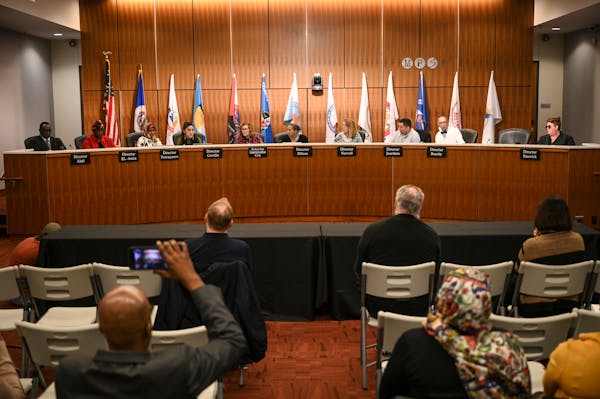A week into the new school year, Anishinabe Academy in Minneapolis is looking for five more teachers — nearly a third of its classroom teaching staff.
"That's probably three times more vacancies than I've had in 12 years," Principal Laura Sullivan said.
Across Minneapolis Public Schools, nearly 1,000 full-time positions remained open as of Wednesday morning. That's a vacancy rate of almost 15% — exceeding the 5% vacancy rate the district expects. It's forcing principals to get creative, sometimes combining classes or shifting teachers on special assignment back into the classroom.
But the Minneapolis school district isn't the only one struggling more than usual to hire staff.
"All the anecdotal conversations with school districts indicate that numbers of vacancies are up across the board," said Gary Lee, the deputy executive director of the Minnesota School Boards Association.
Schools are seeing higher-than-normal vacancy rates in hard-to-fill areas — including special education — but also in math and English teaching positions, he said. In an August survey by the association, districts across the state reported more than 850 teacher vacancies.
In Minneapolis, about 300 of the openings are for teaching positions or other licensed positions, like media specialists or counselors, within schools. Another 380 are school support staff roles.
In addition to Anishinabe, Bethune Arts Elementary, Hall STEM Academy, Las Estrellas Dual Language Elementary and Heritage Academy are also missing at least a fourth of the licensed staff they'd planned for. Many of the schools most in need of staff are on the North Side.
District leaders cite several reasons for the shortage, including a choice to expand their staff in new ways.
The district added hundreds of new positions this year — at a cost of more than $30 million — including a part-time librarian for each school and educators to staff intervention teams aimed at helping students who are struggling academically. Those interventionists' salaries will be paid with one-time pandemic relief funds.
About 70 teachers who were already working in the city's schools moved into the 130 interventionist roles. That included a handful of special education teachers, creating some openings that are historically hard to fill. About 70 special education teaching jobs remain across the district.
"Did we create some churn? Absolutely. I'll own that," said Interim Superintendent Rochelle Cox, adding that she believes the intervention teams are the "best strategy" to help close achievement gaps and support struggling students.
In the first few days of school this week, interventionists across the district have been tapped to fill holes and step into classrooms that lack a licensed teacher. That isn't a new phenomenon — math and literacy specialists (positions also funded by pandemic relief money) were frequently pulled to serve as substitutes in recent years.
"This is not the way I wanted to start the interventionists," Cox said, adding that her cabinet team predicted that the positions could create further staffing issues at the start of the year.
District human resources teams are continuing to recruit and have hired dozens of staff just in the last week. To free up those staffers, temporary consultants are helping with the onboarding process for new hires.
The district's recent $5,000 hiring and retention bonuses and $1,500 referral bonuses have also worked to increase the number of support staff applicants, said Alicia Miller, the district's interim senior human resources officer.
"I'm hopeful we'll keep seeing that trend," Miller said. "We're seeing a lot of quality applicants."
At Anishinabe, the staffing "Plan B" has included combining two third-grade classrooms, pulling in teaching coaches as classroom teachers and having one interventionist to return to his previous role of teaching fourth grade. (The school's second interventionist job is among the vacant positions.)
It's not ideal, Sullivan said, but the last several years have required various levels of creativity and problem-solving when it comes to staffing.
And Sullivan is trying to make the best of it. When she is able to hire more teachers — she's using the term "when," not "if" — she knows they'll need support. And the educators who have been filling in will want to stay invested in their students.
Sullivan is envisioning a kind of coaching model where the teacher who has been filling in can offer mentorship to the new teacher and help ease the transition for the students.
District staff has been meeting twice a day with school administrators to help brainstorm and problem-solve staffing issues, Cox said.
"We're going to have to get really creative as we go through these next couple weeks if we see some of these vacancies sustain," she said.

Want to share info with the Star Tribune? How to do it securely

'Safe recovery sites' would offer syringes, naloxone and more to people using drugs. The plan could be in peril.
New Minnesota GOP leaders seek peace with party's anti-establishment wing

Who is Republican Lisa Demuth, Minnesota's first House speaker of color?

